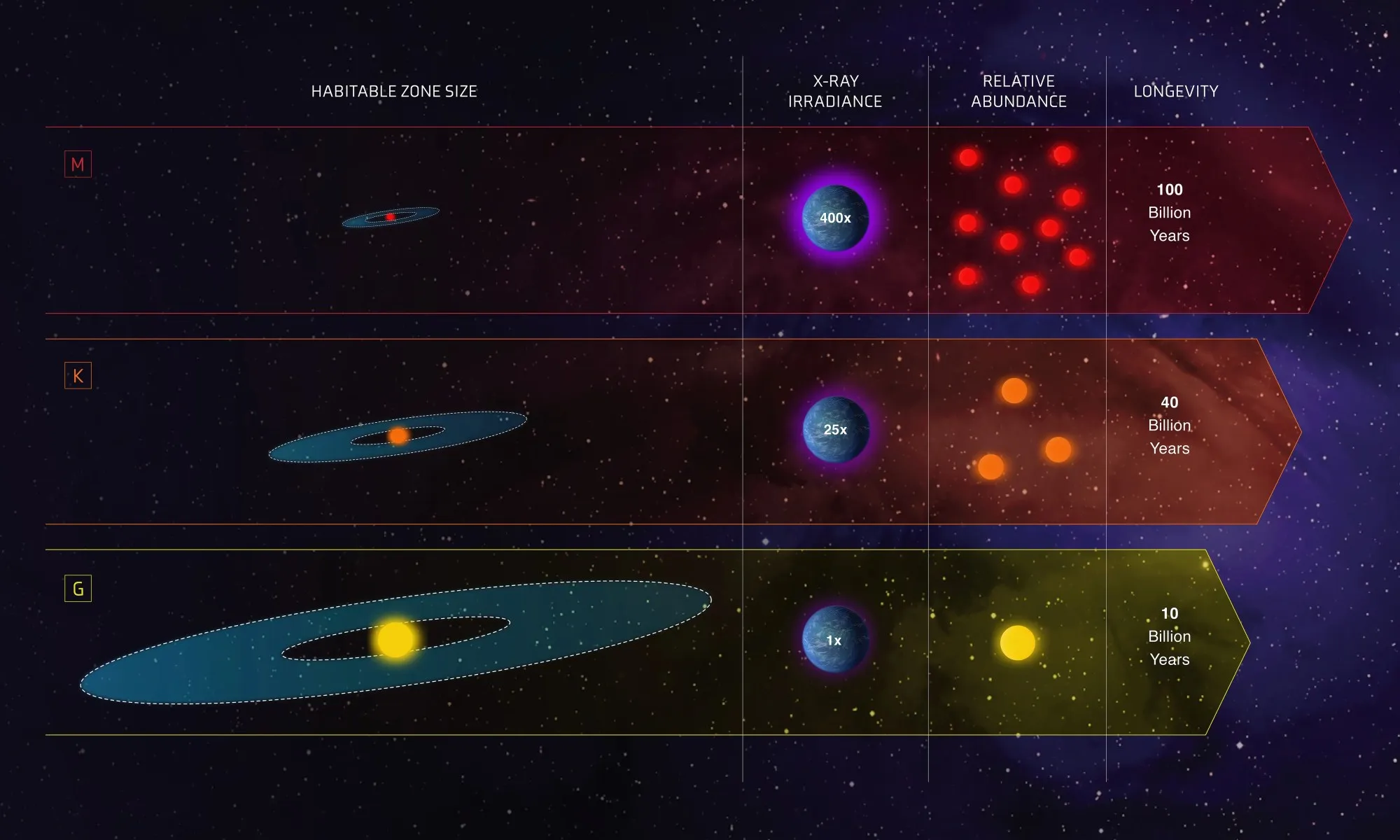Ideal Stars for Finding Life

When astronomers search for life beyond Earth, they focus on planets in a star’s “habitable zone” or “Goldilocks zone.” This zone has temperatures that are just perfect for having liquid water on a planet’s surface, which is crucial for supporting life as we understand it.
Goldilocks stars
A growing concept, supported by three decades of studying stars, is the existence of “Goldilocks stars”. These stars are just right – not too hot, not too cool, and most importantly, not too turbulent, making them suitable for planets that could support life.
Our Sun
Common belief might suggest that stars like our Sun, which has supported life on Earth for about 4 billion years, would be the top choices in searching for other potentially habitable planets. However, according to Edward Guinan from Villanova University, Pennsylvania, stars slightly cooler and less bright than our Sun, known as K dwarfs, are the real “Goldilocks stars.” K dwarfs, especially the warmer ones, are in a perfect middle ground between the rarer, brighter, but shorter-lived G stars (like our Sun) and the more common red dwarf stars (M stars). Guinan says, “K stars have the best of all worlds. If you’re seeking habitable planets, the abundance of K stars increases your chances of finding life.”
Astonishing Facts
Firstly, there are three times more K dwarfs in our galaxy than stars like our Sun. About 1,000 K stars within 100 light-years of our Sun are excellent candidates for exploration. These orange dwarfs have a lifespan ranging from 15 billion to 45 billion years. In comparison, our Sun, which is already halfway through its life, only lasts for 10 billion years. Its quicker evolution means that Earth will likely become uninhabitable in another 1 or 2 billion years. According to Guinan, solar-type stars have limitations on how long a planet’s atmosphere can stay stable. In a billion years or so, Earth will orbit inside the hotter part of the Sun’s habitable zone, causing the Earth to lose its current atmosphere and oceans. By the time the Sun reaches 9 billion years, it will expand into a red giant that could engulf the Earth.
Read the Original Article: NASA
Read more: SpaceX’s Starship Launch: A Mix of Success and Setback










